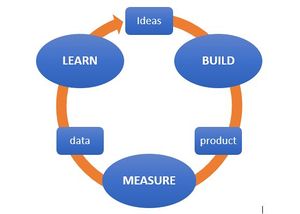Minimum viable product
| Minimum viable product |
|---|
| See also |
Minimum viable product is the cheapest and the fastest product that we can build to get feedback about its value[1]. A product that satisfies the basic needs of early customers, and can provide feedback on future product development. is the quickest thing you can do to learn about your most risky hypotheses[2].
The beginning
The first attempts to define are attributed to Frank Robinson[3], already in 2000, William S. Junk in his work touches the essence of MVP describing the basic principle of project equilibrium[4]. However, it is Eric Ries who most often touches on this topic, to define MVP as such a version of the product that enables the execution of a complete Build-Measure-Learn loop[5].
The Goal of MVP
MVP is needed to get the early data that confirms user interest in a product[6]:
- Saving time and resources
- Project verification: is it attractive to potential users
- Building a database of first users
- Information about the optimal way for full product development
- Minimizing waste, so important for the Lean Starup methodology
The Build-Measure-Learn Feedback Loop
Speed is an important element of product development. Efficiency is determined by the ability to build ideas and ideas (MVP), then measuring the effects of the market, and then drawing conclusions or learning[7]. This is a cycle consisting of transforming ideas into products, collecting measurements about its effectiveness and, in turn, drawing conclusions that aim to improve. This loop is repeated until the effect, and all its phases are[8]: Ideas → Build → Product → Measurement → Data → Learn.
Footnotes
References
- Garbugli G., (2014)Lean B2B: Build Products Businesses Want Étienne Garbugli, Mar 25, 2014
- Junk S. W., (2000)The Dynamic Balance BetweenCost, Schedule, Features, and Qualityin Software Development ProjectsUniversity of Idaho, April 17, 2000
- LeMay M., (2018)Agile for Everybody: Creating Fast, Flexible, and Customer-First Organizations "O'Reilly Media, Inc.", Oct 10, 2018
- Lenarduzzi v., Taibi D., (2016) MVP Explained: A Systematic Mapping Study on the Definitions of Minimal Viable Product Conference Paper, August 2016
- Nandakumar M., (2018)Lean Product Management: Successful products from fuzzy business ideas Packt Publishing Ltd, May 31, 2018
- Olsen D., (2015)The Lean Product Playbook: How to Innovate with Minimum Viable Products and Rapid Customer Feedbacks John Wiley & Sons, May 21, 2015
- Ries E., (2011)The Lean Startup: How Today's Entrepreneurs Use Continuous Innovation to Create Radically Successful Businesses Crown Publishing Group, Sep 13, 2011
- Robinson F., (2000) Proven Methodology to Maximize Return on Risk” http://www.syncdev.com/minimum-viable-product SyncDev, Inc.
Author: Agnieszka Katarzyna Sikora
.
